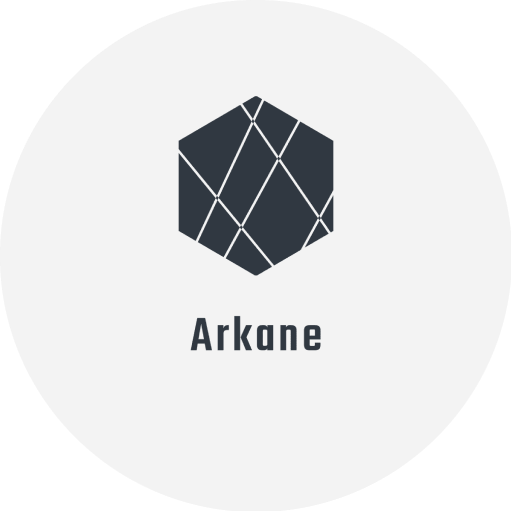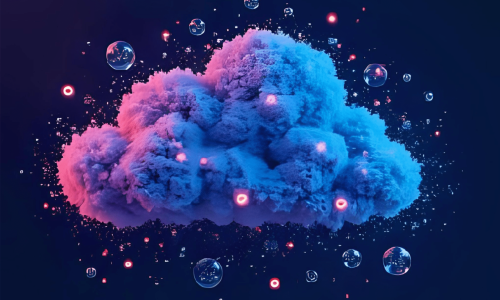![The 4 Major Corporate Fears About AI [and How Arkane Crushes Them]](https://arkanecloud.com/wp-content/uploads/elementor/thumbs/image-fears-r83x02fmwkg0873grkx2f5jvdsy2k1b00h5jqz1vi0.png)
Stable diffusion guide

Introduction to Stable Diffusion
The journey of Stable Diffusion into the limelight of AI and machine learning is a fascinating one, marked by significant milestones and technological advancements. Emerging from the realm of theoretical science fiction, text-to-image AI, epitomized by Stable Diffusion, represents a new era in digital creativity and computing power.
At its inception, Stable Diffusion was a response to the burgeoning need for more sophisticated and accessible AI-driven image generation. This evolution can be traced back to key developments like Google’s introduction of generative adversarial networks (GANs) in 2014, which sparked a revolution in AI synthesis. NVIDIA’s research in 2018 further advanced this field, leading to more realistic image generation capabilities. By 2020, OpenAI’s DALL-E demonstrated the potential of creating vivid images from textual descriptions, setting the stage for more integrated models like DeepMind’s Perceiver IO, which could handle image, text, and audio in unison.
Stable Diffusion’s journey reached a pivotal moment in 2022 with the release of its 1.0 model by Stability AI, bringing accessible text-to-image generation to a broader audience. Later that year, Stable Diffusion 2.0 was unveiled, boasting significant architectural upgrades that enhanced its capabilities. These improvements were not just incremental; they represented a quantum leap in the model’s ability to interpret and translate complex prompts into coherent, detailed images.
The core of these enhancements in Stable Diffusion 2 lies in two fundamental architectural changes. Firstly, the integration of the OpenCLIP Model, a state-of-the-art text encoder developed by Anthropic, revolutionized the model’s understanding of prompts. Its vast vocabulary and transformative architecture enabled a more nuanced interpretation of user inputs. Secondly, the transition from denoising diffusion probabilistic models (DDPM) to the more advanced Latent Diffusion Models refined the model’s ability to generate coherent images, setting a new benchmark in text-to-image AI.
With these upgrades, Stable Diffusion 2 emerged not just as a tool for creating digital art but as a versatile platform capable of a wide range of applications. From AI-assisted digital painting to sophisticated concept art and 3D renders, the model opened up new possibilities in digital creativity. Its applications spanned across various domains, including graphic design, photo upscaling, and even AI-assisted animation.
As we stand on the cusp of further advancements, it’s clear that Stable Diffusion is not just a tool of the present but a harbinger of future innovations in AI image generation. The next frontiers include video generation, 3D scene creation, multimodal models, personalization, and increased data efficiency, promising to further democratize and revolutionize the field of AI-generated art.
Why Use GPU Cloud Servers for Stable Diffusion?
The integration of graphics processing units (GPUs) in cloud servers for AI-driven tasks like image generation is a technological synergy that dramatically enhances computing efficiency and output quality. Initially gaining prominence in the late 1990s, GPUs were primarily geared toward accelerating graphical tasks. However, their aptitude for handling parallel tasks quickly made them invaluable for broader applications, especially in artificial intelligence and machine learning.
The fundamental strength of GPUs lies in their architecture, which is optimized for conducting multiple calculations simultaneously. This parallel processing capability is critical in tasks that involve handling large sets of data or performing complex mathematical computations rapidly. For instance, in image processing, GPUs can process high-resolution images much faster than CPUs. If a CPU takes a minute to process a single image, processing nearly a million images for a video would be impractical. Conversely, GPUs can tackle such tasks within a day, transforming what was once impossible into something quite feasible.
Further advancements in GPU technology, such as NVIDIA’s introduction of CUDA in 2006, have streamlined the use of GPUs for complex AI tasks. CUDA, a parallel computing platform, allows developers to efficiently use GPUs by breaking down complex problems into smaller, independent sub-problems that can be processed simultaneously. This approach not only maximizes the efficiency of GPUs but also simplifies the development of AI applications.
In the context of cloud computing, GPUs have taken a central role, particularly in high-performance computing scenarios. Platforms like Red Hat OpenShift Data Science (RHODS) have leveraged the power of GPUs to enhance data science workflows. This integration allows users to customize the number of GPUs for their specific needs, optimizing tasks such as data mining and model processing.
For AI-driven image generation tasks like those performed by Stable Diffusion, the role of GPUs becomes even more pronounced. By leveraging GPU cloud servers, users can expect accelerated image processing, higher accuracy, and the ability to handle more complex, high-resolution image generation tasks. This makes GPU cloud servers not just a preferable choice but a necessity for modern AI and machine learning applications.
Setting Up Your GPU Cloud Server for Stable Diffusion
Setting up a GPU cloud server for AI applications, such as Stable Diffusion, involves understanding the unique characteristics and requirements of these servers. A GPU server is distinctly different from traditional CPU-based servers, primarily due to its architecture and components optimized for parallel processing. This specialization is crucial for handling complex computational tasks efficiently, making them ideal for AI and machine learning workloads.
Core Components of a GPU Server
- Graphics Processing Unit (GPU):The GPU is the heart of the server, excelling in parallel processing. This capability is vital for managing the extensive mathematical operations required in AI workloads. High-performance GPUs from manufacturers like NVIDIA (e.g., Tesla or A100 GPUs) are common choices for such servers.
- Central Processing Unit (CPU):Despite the focus on GPUs, the CPU is essential for overall system management and executing code not optimized for GPU processing. High-end CPUs like Intel Xeon or AMD EPYC are standard in GPU servers, ensuring efficient resource management and execution of diverse tasks.
- Memory:Adequate memory, including RAM and VRAM (video memory), is crucial for smooth operation during data-intensive tasks such as training neural networks. The memory requirements will vary depending on the specific workload and the size of the datasets being processed.
- Data Storage:Fast data storage solutions like NVMe SSDs are recommended to minimize bottlenecks during computation-heavy processes. These storage options ensure quick access and processing of large datasets, which is common in AI applications.
Setting Up the Server
- Choosing the Right Hardware:Based on the specific requirements of your AI application, select a GPU server with the appropriate specifications. Consider factors such as the number of GPUs, CPU capabilities, memory size, and storage capacity.
- Installing Necessary Software: Install the required software packages and dependencies for your AI application. This may include machine learning frameworks like TensorFlow or PyTorch, programming languages like Python, and any additional libraries specific to Stable Diffusion.
- Configuring the GPU Environment: Set up the GPU environment for optimal performance. This includes installing appropriate drivers, configuring environment variables, and ensuring the software can leverage the GPU’s capabilities effectively.
- Data Management: Efficiently manage data transfer to and from the server. Ensure that your data storage solutions are adequately configured to handle the size and frequency of data access required by your AI application.
- Monitoring and Optimization: Continuously monitor the server’s performance and optimize resource allocation based on workload requirements. Utilize tools and software for real-time monitoring and adjust configurations as needed to maintain optimal performance.
By meticulously setting up and configuring your GPU cloud server, you can harness the full potential of AI applications like Stable Diffusion, ensuring efficient processing of complex tasks and achieving high-quality outcomes.
Choosing the Right Cloud Provider for GPU and Storage Requirements
Selecting the optimal cloud provider for GPU server solutions, like those offered by Arkane Cloud, involves a meticulous evaluation of several crucial factors, each playing a pivotal role in ensuring that the selected provider aligns perfectly with the specific needs of AI and machine learning applications.
Service Offerings
The selection process begins with assessing if the cloud provider’s offerings match your organization’s specific requirements. This includes evaluating the available Infrastructure as a Service (IaaS), Platform as a Service (PaaS), and Software as a Service (SaaS) options. The choice should align with your needs for servers, virtual machines, storage, and network resources, ensuring efficient and effective AI operations.
Scalability
Scalability is a critical aspect, especially for GPU-intensive tasks. The provider should enable easy and cost-effective scaling of resources, both vertically and horizontally, to accommodate fluctuating workloads without performance degradation or cost spikes. This adaptability is essential for handling varying computational demands of AI and machine learning projects.
Performance
Evaluate the provider’s track record for uptime, availability, response times, network, and storage performance. The chosen provider should deliver high-performance computing capabilities with minimal latency to optimize AI applications’ efficiency.
Data Center Locations
Consider the geographical location of the provider’s data centers. Proximity to users can reduce latency, enhance performance, and comply with regional regulations like GDPR. Geographically dispersed data centers also strengthen disaster recovery and business continuity strategies.
Security and Compliance
Robust security measures are non-negotiable. Ensure the provider employs stringent security protocols, including physical security, data encryption, identity and access management, security monitoring, DDoS protection, and data privacy compliance. Additionally, check for compliance with industry-specific and regional regulations, as well as security certifications like SOC2 or ISO 27001.
Data Backup and Disaster Recovery
Assess the provider’s data backup and disaster recovery capabilities. This includes examining their backup options, data retention policies, data security measures, automated backup and recovery processes, and redundancy features across different locations for enhanced data safety and service availability.
Cost and Pricing Structure
The cost-effectiveness of the provider’s services is vital. Investigate their pricing models, resource costs, data transfer fees, and billing transparency to ensure alignment with your budget and usage patterns.
Support and Vendor Lock-in
Examine the provider’s support offerings, including customer support, documentation, community support, and dedicated account managers. Also, consider the risk of vendor lock-in and explore options for a multi-cloud strategy to avoid over-reliance on a single provider.
Networking and Connectivity
Evaluate the provider’s network infrastructure, bandwidth and throughput capabilities, private network connections, load balancing services, IPv6 support, and failover mechanisms to ensure high-performance and reliable connectivity for your applications.
Integration and Compatibility
The provider’s services should seamlessly integrate with your existing tech stack, including on-prem systems, databases, development frameworks, and third-party applications. This ensures smooth workflows and efficient operations.
Monitoring and Analytics
Choose a provider offering comprehensive monitoring and analytics tools. These tools should provide visibility into resource utilization, scaling, cost optimization, and security, ensuring optimal performance of your cloud-based applications.
Business Health
Finally, assess the financial stability, reputation, and long-term viability of the provider. A financially stable and reputable provider is more likely to invest in innovative technologies and maintain a robust ecosystem of services and solutions, ensuring a fruitful long-term partnership.
By carefully considering these factors, you can select a cloud provider that not only meets your current GPU and storage needs but also supports the evolving demands of your AI-driven applications.
Launching and Running Stable Diffusion on Arkane Cloud
Deploying Stable Diffusion on cloud platforms like Arkane Cloud involves several key steps, tailored to harness the full potential of cloud computing for AI and machine learning tasks. Here’s a guide to setting up Stable Diffusion on Arkane Cloud :
Selecting GPU VPS Instances
Arkane Cloud offers a range of GPU instances designed for different computational needs. For running Stable Diffusion:
- Choose between RTX A5000 and NVIDIA H200 series instances, depending on your workload. RTX A5000 instances, equipped with NVIDIA RTX A5000 GPUs and AMD CPUs, are suitable for sporadic tasks. For more intensive workloads, H200 instances, featuring NVIDIA H200 Tensor Core GPUs, offer greater processing power.
Understanding Pricing Models
Arkane Cloud provides flexible pricing options:
- On-demand Instances: Best for short-term, unpredictable workloads. You pay per hour or second, offering flexibility without long-term commitments.
- Reserved Instances: Ideal for predictable workloads with long-term commitments. They offer discounted rates and capacity reservations, available in 1 or 3-year terms with various payment options.
Ensuring Security and Access
Security is crucial when setting up your environment:
- Set up Security Groups: Think of these as virtual firewalls, defining traffic rules for your instances. Restricting SSH traffic to known IP addresses can significantly enhance security.
- SSH Access: Secure your instances using SSH. Arkane Cloud prompts you to create key pairs during setup; safeguard your private key as it’s essential for secure access.
Installing Necessary Software
Proper environment setup is essential:
- CUDA Drivers: Critical for GPU-software communication. Download and install the appropriate CUDA toolkit version from NVIDIA, ensuring compatibility with your software dependencies.
- Dependencies for Stable Diffusion: Install specific Python libraries or other tools required by the version of Stable Diffusion you’re using. Refer to the official documentation and consider using virtual environments like venv or conda to manage dependencies and prevent conflicts.
By meticulously following these steps, you can effectively deploy and run Stable Diffusion on Arkane Cloud, leveraging the power of cloud GPUs to enhance the efficiency and output quality of AI-driven tasks.
Navigating the Stable Diffusion GUI on Different Operating Systems
Navigating the Stable Diffusion GUI varies slightly across different operating systems, each having its unique setup process. Below are the steps for Windows, Mac (Apple Silicon M1/M2), and Ubuntu/Linux distributions.
For Windows Users
- System Requirements: Ensure your PC runs Windows 10 or higher and has a discrete Nvidia GPU with at least 4 GB VRAM.
- Installation Steps:
- Install Python, ensuring all previous versions are uninstalled.
- Install Git for Windows.
- Clone the AUTOMATIC1111 repository.
- Download the Stable Diffusion v1.5 model checkpoint file.
- Run webui-user.bat in the stable-diffusion-webui folder and open the provided URL in a web browser to access the AUTOMATIC1111 web UI.
For Mac (Apple Silicon M1/M2) Users
- Hardware Requirements: Ensure your Mac is equipped with Apple Silicon M1, M1 Pro, M1 Max, M2, M2 Pro, or M2 Max, and preferably has 16 GB or more memory.
- Installation Steps:
- Install Homebrew, a package manager for macOS.
- Install required packages like cmake, protobuf, rust, and git using Homebrew.
- Clone the AUTOMATIC1111 repository and download the required Stable Diffusion model.
- Start the AUTOMATIC1111 GUI using the Terminal and access it through a web browser.
For Ubuntu/Linux Distro Users
- Basic Requirements: Ensure compatibility with Stable Diffusion, an NVIDIA GPU with at least 4GB VRAM, and a minimum of 8GB RAM and 20GB disk space.
- Installation Steps:
- Install Anaconda to manage software dependencies.
- Download the Stable Diffusion model from Hugging Face.
- Clone the Dream Script Stable Diffusion Repository and create the necessary Conda environment.
- Activate the Conda environment, preload models, and run the dream script. Generated images will be stored in the outputs/img-sample folder.
By following these tailored steps for each operating system, users can smoothly navigate and utilize the Stable Diffusion GUI, thus leveraging its capabilities for AI-generated art creation.
Creating Images with Text Prompts in Stable Diffusion
Creating compelling images with Stable Diffusion involves a nuanced approach to crafting text prompts. It’s a blend of precision and creativity, where the effectiveness of the output hinges on the clarity and specificity of the input.
Anatomy of a Prompt
- Subject: This is the focal point of your image. It could be a character, object, scene, action, emotion, or position. The subject sets the direction for the AI’s creativity.
- Detailed Imagery: Here, you delve into specifics like clothing, expression, color, texture, proportions, perspective, reflection, shadows, and interaction. This layer adds depth and nuance to your image.
- Environment Description: Set the stage with elements like indoor/outdoor settings, landscapes, weather, time of day, background, foreground, terrain, architecture, and natural elements.
- Mood/Atmosphere: Convey the soul of the image through emotion, energy, tension, serenity, warmth, coldness, brightness, and darkness.
- Artistic Style: Choose your preferred visual genre, such as anime, photographic, comic book, fantasy art, low poly, pixel art, watercolor, or line art.
- Style Execution: Decide on the illustration technique, rendering engine, camera model/settings, materials, resolution, lighting, and color types to bring your vision to life.
Fine-Tuning with Prompt Parameters
- Negative Prompt: Exclude unwanted elements by specifying what you don’t want in your image, like “no buildings or vehicles” for a nature scene.
- Scheduler: This is like an orchestra conductor, guiding the model’s internal operations to match your desired outcome.
- Steps: Represent iterative refinements, with more steps equating to more refined outputs. It’s a balance between precision and efficiency.
- Guidance Scale: Sets the strictness level of how closely the AI should follow your prompt. A higher value means closer adherence to the prompt.
- Seed: Ensures consistency. Using the same seed with the same inputs and parameters will produce the same output every time.
- Styles: With over 90 styles in Stable Diffusion XL, you can dictate the visual language of your output, influencing the mood, tone, and impact of the final image.
Crafting a successful prompt in Stable Diffusion is like cooking or painting, where the careful combination of ingredients or elements, guided by thoughtful techniques and parameters, leads to a masterpiece that resonates with your creative vision.
Image to Image Transformation with Stable Diffusion
Stable Diffusion’s img2img feature offers transformative capabilities in image processing, allowing users to convert ordinary images into extraordinary art with AI assistance. This section delves into the world of img2img stable diffusion, guiding users through its usage to achieve enhanced results in image transformations.
Understanding Stable Diffusion
Stable diffusion is pivotal in image processing due to its ability to smooth out noise while preserving key image features, such as edges and textures. This process, akin to the natural spread of heat in a material, evenly distributes pixel values, leading to smoother, more aesthetically pleasing images. Its significance lies in its capacity to improve image quality, maintain crucial aspects, and bolster image analysis in various applications, including medical imaging, art restoration, and remote sensing.
Basics of Img2img
Img2img stands out as a versatile and powerful image processing tool, designed to facilitate the application of stable diffusion techniques to images. Its user-friendly interface and comprehensive feature set enable efficient image processing while safeguarding important image characteristics. This makes img2img an invaluable resource across diverse fields, from medical imaging to art restoration.
Installation and Setup
Getting started with img2img involves a few straightforward steps:
- Download: Obtain the img2img software package from the official website or repository.
- Install: Follow the installation instructions, which may include unzipping the package and executing an installer or terminal commands.
- Configure: Adjust settings and preferences to tailor img2img to your specific needs.
Common Features and Functions
Img2img offers a broad spectrum of features to enhance image processing:
- Image Loading and Saving: Manage images in various formats efficiently.
- Stable Diffusion Filters: Apply a range of filters to fine-tune the image smoothing process.
- Edge Detection and Texture Preservation: Identify and preserve crucial edges and textures in images.
Integrating Stable Diffusion with Img2img
The integration process is key to optimizing img2img’s capabilities:
- Preparing Your Image: Convert formats, resize images for optimal performance, and adjust color settings as needed.
- Applying Techniques: Load the image into img2img, select and adjust stable diffusion filters, and apply them to the image.
- Evaluating Results and Performance: Conduct a visual inspection, employ quantitative metrics like SNR or MSE, and evaluate the processed image’s suitability for specific applications like medical imaging or art restoration.
By mastering these steps, users can harness img2img’s full potential in Stable Diffusion, transforming images to meet various artistic and practical needs while maintaining the integrity and quality of the original images.
Newsletter
You Do Not Want to Miss Out!
Step into the Future of Model Deployment. Join Us and Stay Ahead of the Curve!





